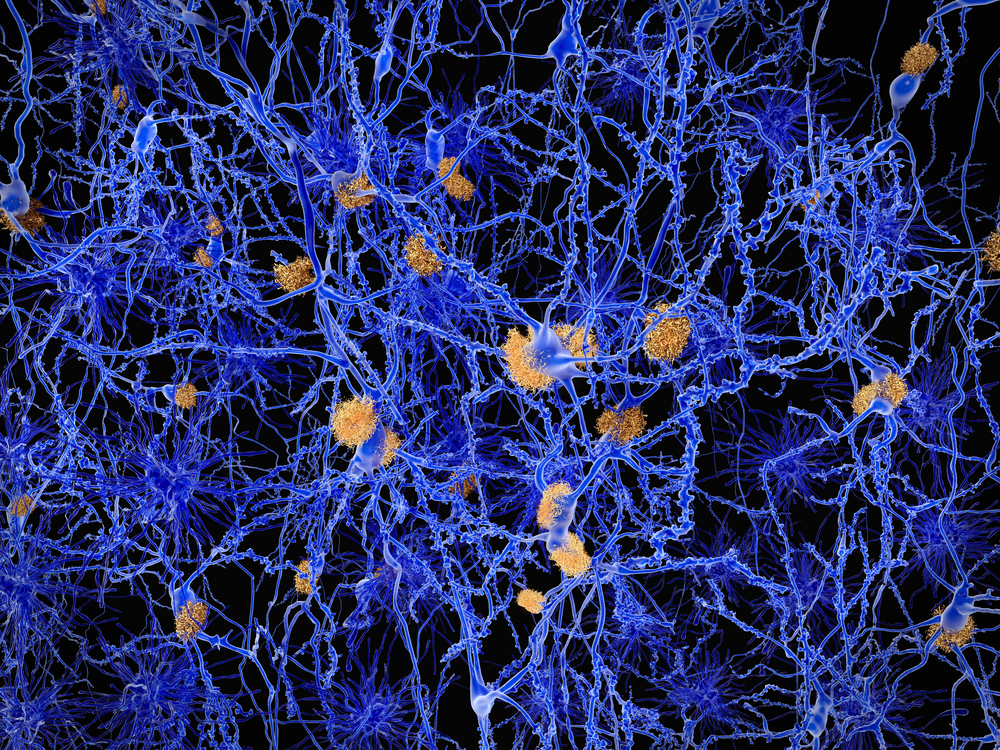3D-Structure of Protein Revealed, Studied As Link to Early Onset of Parkinson’s

Researchers have discovered the 3D structure of a protein involved in inflammation, with implications in developing future treatments for Parkinson’s disease.
The study from Saint Louis University School of Medicine, “The structure of iPLA2β reveals dimeric active sites and suggests mechanisms of regulation and localization” was published in the journal Nature Communications.
The protein, known as calcium-independent phospholipase A2β, (iPLA2β), is known to regulate several important processes, including inflammation. The enzyme cleaves phospholipids in the cell’s membrane and produces important signals after injury to initiate the inflammatory response.
“It was first discovered more than 20 years ago at Washington University in Richard Gross’s lab. They found that the protein played a role as a part of the cardiovascular system in response to an ischemia or injury. Next, researchers found that it is also involved in the insulin production cycle and, when misregulated, can lead to type I diabetes,” said Sergey Korolev, PhD, in a press release. Korolev is associate professor of biochemistry and molecular biology at Saint Louis University.
Researchers eventually found that Parkinson’s disease patients carried mutations in this gene, a discovery that rendered the enzyme a second name, PARK14.
“Less than 10 years ago, it was rediscovered from a completely different point of view through the genetic sequencing of patients with neurodegenerative issues. For example, inherited mutations in this gene were identified in patients with early onset Parkinson’s,” Korolev said.
The protein seemed to play different roles in different tissues and parts of the cell, making it more difficult to fully understand its mechanism of action.
However, it was clear this protein could be potentially harmful, contributing to cardiovascular diseases, diabetes and cancer metastasis.
Attempts to design inhibitors for iPLA2β enzyme as a potential form of therapy were unsuccessful, as “it was very difficult without knowing the 3D structure of the protein,” Korolev said.
Korolev and his team set out to unveil the protein’s molecular structure using a technique called X-ray crystallography, where a crystal of the protein is built — a process that can take years to achieve — and is then hit with X-ray beams.
The pattern of how the X-rays spread once they hit the crystal, generating what is known as a diffraction pattern, is captured on a detector plate and used to unravel the structure of the protein.
With the protein’s 3D structure available, researchers now can begin to understand how the protein works and design ways to modulate its activity.
“Before we had the structure, people didn’t have good tools to study this enzyme,” Korolev said. “Now, this will take the field to a new level.
“We’ve opened up lots of possibilities. The mechanism of regulation was completely unknown. Now, the 3D structure gives us a clear hypothesis for how it is responsible for action in different cellular compartments and tissues. Now that we can better understand how the protein interacts with lipid molecules, it will be much easier to develop drugs,” he said.
Importantly, the structure of the protein is markedly different from what existing models predicted.
“One of the key findings about the structure we uncovered is that it significantly revised previously developed theoretical models, which couldn’t explain many functional features. Now, with the real structure, many pieces of an intricate puzzle click together providing clear hypothesis about the mechanism of protein’s function and regulation.”
The function of this protein in the brain is completely unknown, but now, with the protein’s genetic sequence and 3D structure, researchers can start unveiling its functions and its role in Parkinson’s and other neurodegenerative disorders.
“In the past, people have studied this complex enzyme, like a black box, without knowing what is inside,” Korolev said. “Now that we have discovered the structure, we can see every atom. This allows us to visualize what is happening with this protein. It is a completely new level of insight.”
There is a growing amount of genetic work that links iPLA2β to neurodegenerative disease, and physicians and scientists worldwide are now interested in its function,” said study first author, Konstantin R. Malley. “We are still a long way from treating patients, but I would like them to know that the structure is a large step between genetics and developing targeted therapies for treatment.
“We hope that it provides a jumping-off point for firstly, understanding how iPLA2β works in the brain. Next we can employ different strategies, such as small molecule drugs, that would either prevent iPLA2β interacting with other proteins, or change its activity to prevent inflammation, which is an increasingly important factor in Parkinson’s and other brain disorders,” Malley added.






